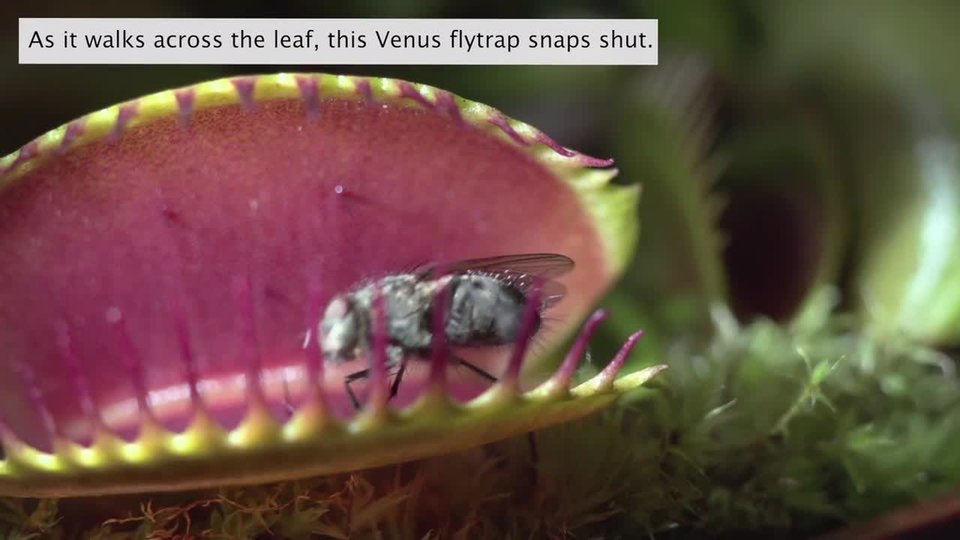SpreadingtheWord
Goodallbegantopublishherfieldresearch.Yet,shewasmetwithskepticismfromthescientificcommunity.Afterall,shehadnosciencetraining.In1962,GoodallgaveapresentationattheZoologicalSocietyinLondon.Sheimpressedmanypeoplethere.But,otherswerenotimpressed.OnememberoftheZoologicalSocietydescribedherworkas“anecdoteand… speculation”thatmadeno“realcontributionto science.”
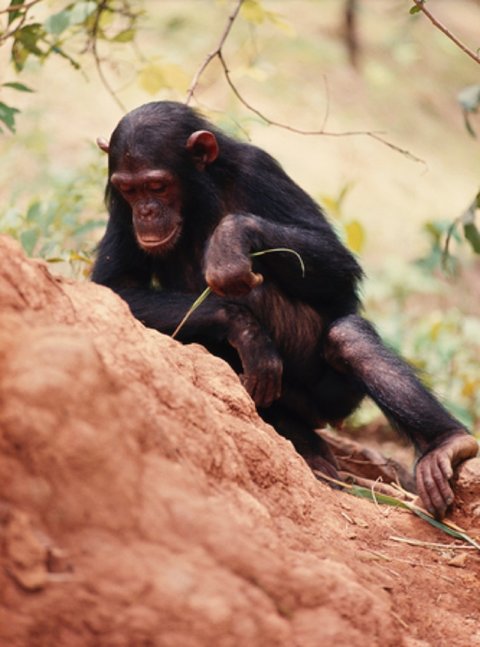
Achimpanzeedigsfortermiteswithabladeof grass.
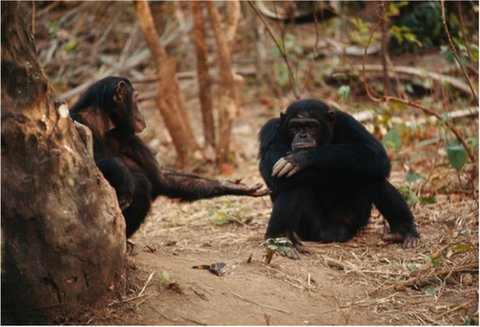
Melissareachesoutherhandto Faben.
ProofPositive
Goodallneededmoreevidenceofherwork.TheNationalGeographicSocietysuggestedshecreateaphotographicrecordofher discoveries.
TheSocietyhiredHugovanLawickforthejob.The25‑year‑oldDutchmanhadsomeexperienceinnaturalhistoryfilmmaking.HereachedGombeinAugust 1962.
AsGoodallandvanLawickdocumentedthechimps’behavior,neitherfocusedontakingpicturesofGoodallwiththechimps.ButNationalGeographicmagazineeditorswantedphotosofheraswell.Theywantedtoshowpeoplehowshestudiedthe animals.
Atfirst,thatmadeGoodalluncomfortable.Shewantedherworktobeaboutthechimpsonly.But,shecametounderstandthatpeoplewereinterestedinher,too.Itwasunusualforawomantobeascientistatthistime.PeoplewereascuriousaboutGoodallastheywereaboutthe chimps!
Lawick’sworkcapturedphotographicproofofthechimpsmakingandusingtools.Healsorecordednestbuildingandhowthechimpsbehavedsocially.AndhetookmanypicturesofGoodalldoingher work.
HisphotographsappearedwithGoodall’swordsinNationalGeographicmagazine’sAugust1963 story,“MyLifeAmongWildChimpanzees:AcourageousyoungBritishscientistlivesamongthesegreatapesinTanganyikaandlearnshithertounknowndetailsoftheir behavior.”
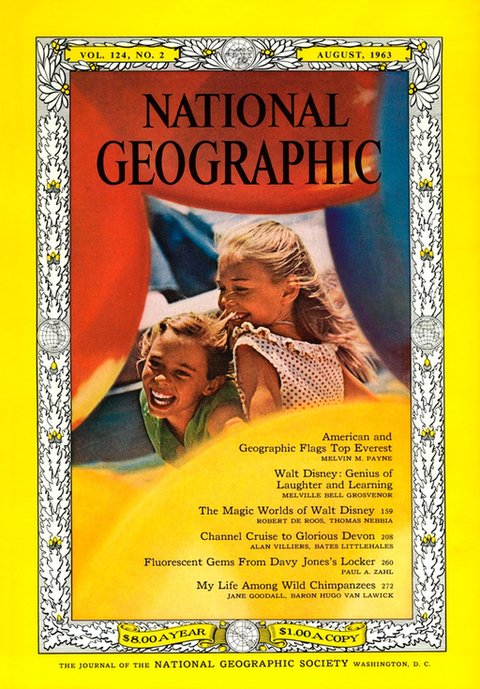
ThecoverofNationalGeographicmagazine,August 1963
ANovelApproach
Theissuewasahugesuccess.In1964,GoodallwassettogiveherfirstmajorpubliclectureintheUnitedStates.Shewasalittlenervousaboutbeingonstageinfrontofthousandsofpeople.ThemembersoftheNationalGeographicSociety’slecturecommitteeseemedevenmorenervous.Astheeventneared,thecommitteeaskedforadraftofherspeech.Shehadn’twritten one!
ButGoodallknewwhatshewantedtosay.Shereportedonherscientificdiscoveries.ShedescribedGombeasbeautifulandpeaceful.Andasshewouldthroughouthercareer,shedescribedchimpsbytheirpersonalitiesandthenamesshe’dgiven them.
ShedescribedFifias“agileandacrobatic”andFifi’solderbrother,Figan,asanadolescentwho“feelshe’salittlebitsuperior.”Goodallnamedonebabychimpwhowas“justbeginningtofindherfeet,”Gilka,afteraNationalGeographiceditor.

achimpnamed Pom

GoodallwatchesFlintfroma doorway.
Indescribingtheneedtoprotectthechimpsandpreventthemfrombeingshotorsoldtocircuses,GoodallreferredtoDavidGreybeard.Hewasthechimpwhohadopenedthedoortosomeofhermostimportant discoveries.
“DavidGreybeard… hasputhiscompletetrustinman,”shetoldtheaudience.“Shallwefailhim?Surelyit’suptoustodosomethingtoensurethatatleastsomeofthesefantastic,almosthumancreaturescontinuetoliveundisturbedintheirnatural habitat.”
Herpresentationwasatriumph.Itwasalsoamilestoneinherbecomingapublicfigure.Thiswasn’tastatusshewaslookingfor.Butshelearnedthatitcouldhelpherdeliverhermessagetomorepeople.Itwasthebeginningofalongandsuccessful career.
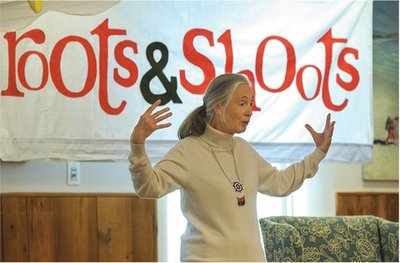
JaneGoodall,Continued
JaneGoodallwentontoearnherPh.D.fromCambridgeUniversity.Shehaspublishedmanymagazinearticlesandbooksaboutherresearch.In1991,shefoundedanorganization called
“Roots & Shoots”inTanzania.Itsgoalisto helpyoungpeoplebegincareersinconservationwork.Today,herworkinconservation continues.
